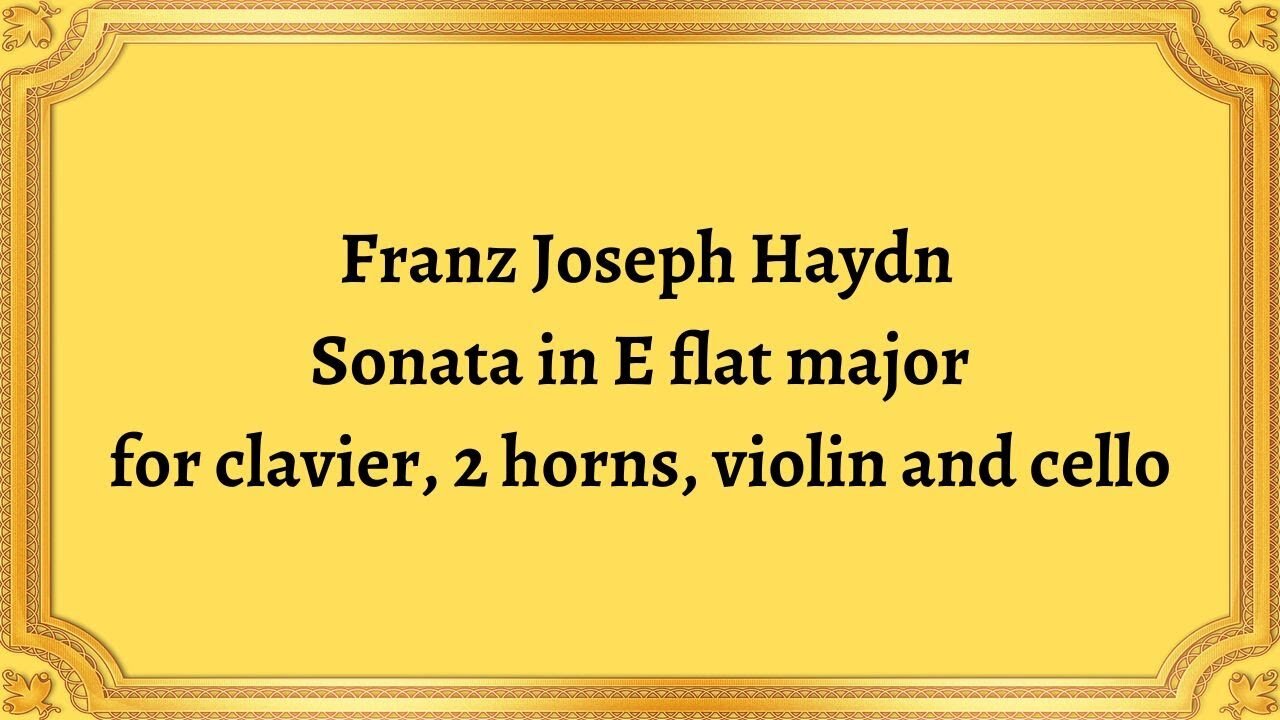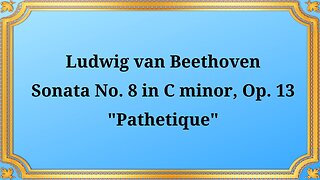Premium Only Content

Franz Joseph Haydn Sonata in E flat major for clavier, 2 horns, violin and cello
#Haydn #Sonata #Clavier #Horns #Violin #Cello #EarlyClassicalPeriod #ClassicalMusic #BaroqueMusic #MusicalInnovation #MusicalHistory #ClassicalPeriodMusic #InstrumentalMusic #ClassicalInstruments #MusicAppreciation #MusicEducation #MusicHistory #Musicology #PerformingArts #classicalconcerts
Franz Joseph Haydn's Sonata in E flat major for Clavier, 2 Horns, Violin, and Cello stands out as a masterpiece from the composer's vast repertoire of music. The piece's composition was completed in 1766, during Haydn's earlier years as a professional musician. The Sonata showcases the vitality, brilliance, and innovation of the early classical period's music, and it marked a departure from the older forms of Baroque music.
This Sonata provides a delightful experience for the listener, encompassing all the best aspects of Haydn's compositional style. It begins with a long introduction, played by all the instruments, setting the stage for the musical dialogue that follows. The composition comprises three movements, with each movement providing a varied musical experience from the previous one.
The first movement, Allegro moderato, is robust and lively, simultaneously playful and grandiose. Haydn designed it for the clavier, two horns, and strings for the maximum possible effect. The use of horns adds a unique richness to the music, which was virtually unheard of before. The Sonata's second movement, Adagio, is a remarkable blend of intensity and restraint, with a beautiful, understated melody played primarily by the strings, while the clavier provides a delicate background texture.
The final movement, Presto, returns listeners to the playful mood of the first movement, with an upbeat and joyful musical conversation among the various instruments. The cascading notes from the clavier and the horns' resonant sounds perfectly balance the violin and cello's intricate melodies, making it a truly memorable piece of music.
In conclusion, Franz Joseph Haydn's Sonata in E flat major for Clavier, 2 Horns, Violin, and Cello, stands as a testament to his exceptional musical talent and his creativity. It is a masterpiece that transcends time and has been celebrated by classical music enthusiasts for centuries. Through the piece, Haydn showcases his innovation, vibrancy, and musical brilliance, marking a significant departure from the Baroque era's rigid compositional structures. Overall, this Sonata is a must-listen for anyone who wishes to appreciate the beauty and nuance of classical music of the early classical period.
You have the opportunity to support the channel https://destream.net/live/RadSiarAl/donate
-
 18:26
18:26
Classical music_Music Inspiration
1 month agoLudwig van Beethoven Piano Sonata No. 8 in C minor, Op. 13 "Pathétique"
591 -
 LIVE
LIVE
Glenn Greenwald
1 hour agoSemafor Editor Ben Smith on Epstein Saga; How do MAGA Supporters Really Feel About Trump's Foreign Policy? Eddington Movie Review: Reflections on 2020 | SYSTEM UPDATE #490
13,040 watching -
 1:05:20
1:05:20
BonginoReport
2 hours agoEpstein: From “Case Closed” to “To Be Continued” - Nightly Scroll w/ Hayley Caronia (Ep.95)
41K18 -
 1:32:14
1:32:14
Kim Iversen
2 hours ago"Obama Belongs In Jail!" Tulsi Gabbard Exposes Entire Russiagate Hoax
65.7K46 -
 LIVE
LIVE
Robert Gouveia
2 hours agoBarrack Obama is GUILTY!! Declassified Docs RELEASED! Ghislaine Maxwell MEETING!!
2,269 watching -
 LIVE
LIVE
RalliedLIVE
1 hour agoHIGH OCTANE WARZONE SOLOS ALL DAY
181 watching -
 2:22:10
2:22:10
Nick Freitas
1 hour agoChurchill, Franco, and Rhodesia: Rethinking the Villains and Heroes of History
151 -
 13:01
13:01
Professor Gerdes Explains 🇺🇦
3 hours agoUkraine in Turmoil: MASSIVE PROTESTS Against Zelensky ERUPT Nationwide
12 -
 1:43:11
1:43:11
Redacted News
3 hours agoBREAKING! TRUMP DECLARES WAR ON OBAMA "TREASON" AS A DEEP STATE RINGLEADER IN RUSSIA HOAX | REDACTED
120K116 -
 1:22:13
1:22:13
Michael Franzese
3 hours agoPablo Escobar’s Son Breaks Silence About His Father, Narcos, and The Cartel
23.5K6